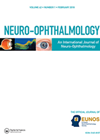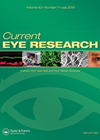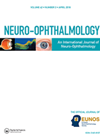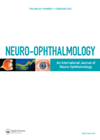
Journal Reviews
Do patients with prolactinomas using dopamine agonist drugs have autonomic dysfunction?
This prospective study aimed to determine whether there is autonomic dysfunction in patients with prolactinomas using dopamine agonist (DA) drugs by measuring static and dynamic pupillary responses using an automatic pupillometric device.Included were 25 eyes from 25 patients who were...
The effect of caffeine on pupil size and accommodation
Twenty-two young and healthy participants were recruited in this study. The authors showed that pupil size increased as a result of caffeine consumption. A more stable (lower variability of accommodation) accommodative response (AR) was induced by caffeine intake, whereas the...
Pupil responses in diabetes
This study aimed to investigate pupillary involvement in patients with type 2 diabetes mellitus (DM) and to evaluate any relationship between severity of diabetic retinopathy (DR) and pupillary responses. Participants included 133 individuals in four groups: proliferative DR (n=21), non-proliferative...
Using a pupillometer to confirm presence of RAPD in post stroke homonymous hemianopia
It has been reported that relative afferent pupillary defects (RAPDs) may be present in patients with occipital lobe lesions. However, a small contralateral RAPD due to a difference in the crossed and uncrossed fibres can be difficult to detect using...
Use of the RAPDx device to evaluate efficacy of treatment in patients with optic nerve disease
The RAPDx objectively determines the RAPD magnitude by alternately presenting light stimuli to each eye and deriving amplitude and latency scores. The authors of this paper evaluated the amplitude and latency scores from the RAPDx together with other ophthalmic investigations...
A case report of alternating anisocoria with associated nasal congestion
The authors have described a group of healthy individuals who show alternating anisocoria, in a previous paper. In these cases, the pupil asymmetry alternates between eyes every few hours, with no observed instances when both pupils are equal in size....
Use of RAPDx device with optic nerve disease
The authors have previously reported on use of the RAPDx device for evaluating relative afferent pupillary defects (RAPD). RAPDx objectively determines the magnitude of RAPD by presenting light stimuli alternately to pairs of eyes with laterality. The parameters of amplitude...









